In Hindu tradition, cow worship, also known as Gau Mata, holds a special place in Indian society. The cow is seen as a sacred and gentle being, deeply integrated into Hindu culture and spirituality for centuries. Ancient Hindu texts and stories depict cows as divine beings, symbolizing purity, prosperity, and motherhood.
Apart from religious significance, cows are incredibly important in everyday life. They provide nourishment through milk and assist in agriculture. Philosophically, cows represent nurturing and selflessness, promoting the idea of “Ahimsa” or non-violence.
However, cow worship faces challenges, including the Gau Raksha (Cow Protection) movement and debates on cow slaughter. These issues raise questions about religious freedom and animal rights, making it essential to find a balance between tradition, law, and ethics.
The economic and ecological aspects of cow worship underscore their role in rural livelihoods and sustainable practices. While cow veneration is a crucial part of cultural heritage, fostering understanding and respect for diverse beliefs is equally important.
Cow in Hindu Mythology and Scriptures

Cows have a significant and respected role in Hindu mythology and beliefs. In Hinduism, they are not just ordinary animals but divine beings connected to various deities. Let’s explore their importance:
- Sacred and Symbolic: In Hindu myths, cows represent purity, abundance, and divine blessings. The Vedas, ancient Hindu texts, mention cows in rituals and sacrifices. They are praised as “Kamadhenu,” a cow that grants all wishes. Some goddesses are even linked to cows, like “Surabhi” and “Nandini,” seen as the mothers of all cows.
- Connected to Deities: Many Hindu gods are associated with cows. Lord Krishna, a central figure, is portrayed as a cowherd and shows affection for cows, especially his favorite cow, “Surabhi.” Stories from his childhood often include loving interactions with cows, emphasizing the bond between humans and these gentle creatures.
- Important in Rituals: Cows play a vital role in Hindu rituals and ceremonies. Their presence is considered lucky in events like weddings and housewarming ceremonies. People offer them gifts to seek blessings and prosperity. During festivals like “Gopashtami” and “Govardhan Puja,” cows are worshipped with devotion and gratitude.
- Cows as Universal Mothers: In Hinduism, cows are known as “Gau Mata” or “mother of all.” This symbolizes their nurturing nature and their role in providing milk and dairy products. Cow’s milk is seen as pure and used in religious offerings.
- Connected to Righteousness and Non-Violence: The importance of cows is closely linked to the principle of “Dharma” (righteousness) and “Ahimsa” (non-violence). Protecting and caring for cows are seen as virtuous acts, promoting compassion and respect for all living beings. Hindu scriptures advocate kindness towards cows and discourage any harm towards them.
- Mythological Stories: Hindu mythology is full of stories showcasing the value and respect for cows. For instance, the tale of Lord Krishna lifting the Govardhan Hill to protect cows and villagers from rain symbolizes their role in preserving life and providing sustenance.
In summary, cows hold a central place in Hindu mythology, representing purity, abundance, and nurturing. They are deeply revered in Hindu culture, promoting harmony between humans, animals, and nature, while encouraging compassion and non-violence.
The Philosophical and Spiritual Perspectives on Cow Worship
Cow worship in Hindu tradition is deeply rooted in ancient scriptures, religious beliefs, and cultural practices of India. The cow, known as “Gau Mata” or the “Mother Cow,” holds significant importance in Hinduism. Here are some reasons why cows are revered:
- Motherly Symbolism: Hindus see cows as symbols of motherhood and nurturing. Just as a mother cares for her children, cows provide vital sustenance like milk and dairy products, creating a sense of gratitude and respect.
- Sacred and Divine: Hindu scriptures consider cows as sacred and not to be killed. They are even linked to deities like Kamadhenu and Nandi, bestowing divine blessings, making cows worthy of reverence and protection.
- Spiritual Connection: Cow worship embodies selflessness and service, essential spiritual principles in Hinduism. Cows offer nourishment without expecting anything in return, teaching kindness and service to all living beings.
- Non-violence and Compassion: Hinduism values non-violence (Ahimsa) and respects all life forms. Cows, gentle creatures, align with this principle, promoting compassion towards animals and others.
- Connection to Nature: Cows play a significant role in agriculture, helping with plowing and providing natural manure, symbolizing ecological balance and harmony.
- Spiritual Purity: Cow products like milk and ghee are used in religious ceremonies to purify the environment and promote well-being, aiding spiritual growth.
- Yogic Significance: Some yogic practices meditate upon cows to attain heightened states of consciousness and spiritual enlightenment, aiming to develop qualities like calmness and gentleness.
Overall, cow worship in Hindu tradition revolves around reverence, gratitude, selflessness, and the interconnectedness of all life forms. It serves as a reminder of the sacredness of living beings and the harmonious relationship between humans, animals, and nature.
Gau Raksha (Cow Protection) Movement

The Gau Raksha (Cow Protection) Movement in India aims to protect cows, which are considered sacred in Hindu tradition. They believe cows are not just livestock but Gau Mata (Mother Cow) with a special place in Hindu society. The movement wants to stop cow slaughter, ensure ethical treatment, and preserve their cultural importance.
I. Emergence and Evolution of the Gau Raksha Movement:
The Gau Raksha movement started in ancient Hindu texts that emphasized the importance of protecting cows. In modern times, it gained momentum during the colonial era and became more prominent after India gained independence. Hindu organizations, religious leaders, and activists played a crucial role in promoting and leading the movement.
II. The Role of Cow Protection in Modern Hindu Society:
In today’s Hindu society, the Gau Raksha movement is seen as a way to preserve cultural identity and traditions. It’s also linked to maintaining rural livelihoods, as cows are central to agriculture in many parts of India. Hindus see cow protection as an essential aspect of their heritage, fostering unity and pride.
III. Controversies and Challenges Surrounding Cow Protection Activities:
The Gau Raksha movement faced criticism and controversies, especially concerning vigilante groups resorting to violence in the name of cow protection. This confrontational approach led to social tensions and legal challenges. Balancing religious sentiments with secularism and minority rights has been a challenge for the Indian government and legal system.
IV. Economic and Ecological Aspects of Cow Worship:
The Gau Raksha movement is associated with the economic aspects of cow rearing, like the dairy industry and cattle-based livelihoods in rural areas. Cows provide milk and dairy products, crucial for sustenance and agricultural economies. Cow dung is used as fuel and fertilizer, supporting sustainable agricultural practices.
V. Legal Perspectives on Cow Slaughter and Cow Protection:
Cow slaughter is a contentious issue in India, with laws varying across states. Some states have banned it completely, while others have more lenient regulations. The movement advocates for stricter laws against cow slaughter and better enforcement of existing rules. However, debates on religious freedom and individual rights question the restrictions on beef consumption.
The Gau Raksha (Cow Protection) Movement remains a complex aspect of Indian society, reflecting deep reverence for cows in Hindu tradition. It also presents challenges related to law, politics, and societal harmony. As the movement evolves, finding a balanced approach that respects religious sentiments and promotes ethical treatment of animals is crucial for coexistence among diverse communities.
Conclusion
In conclusion, cow worship (Gau Mata) holds great significance in Hindu tradition in India. Cows are seen as divine beings, symbolizing purity, prosperity, and motherhood in Hindu mythology. They play a vital role in daily life, providing nourishment through milk and supporting agriculture and the environment.
The spiritual perspective on cow worship emphasizes selflessness, compassion, and non-violence. Cows are considered universal mothers, showing care that goes beyond human relationships. This respect for cows reflects the interconnectedness of all life forms and encourages responsibility towards the environment and others.
However, cow worship faces challenges, particularly with the Gau Raksha (Cow Protection) Movement. While the movement aims to protect cows due to deep religious beliefs, its confrontational approach and occasional violence have caused controversies and social tensions. Balancing religious beliefs with secular principles and protecting minority rights is a delicate task for Indian society and its legal system.
The economic and ecological aspects of cow worship highlight the importance of cows in rural livelihoods and sustainable agriculture. The dairy industry and the use of cow dung as a natural resource contribute to rural economies and environmental preservation.
To navigate these complexities, it’s crucial to promote mutual respect, understanding, and empathy towards different beliefs and practices. By emphasizing compassion and non-violence, societies can work towards a harmonious balance between tradition, law, and ethics.
As the Gau Raksha Movement evolves, it must strive to promote ethical treatment of animals while respecting the diverse cultural practices within India’s multicultural society. Encouraging dialogue and education can help dispel misunderstandings and bridge gaps between communities with differing perspectives on cow protection.

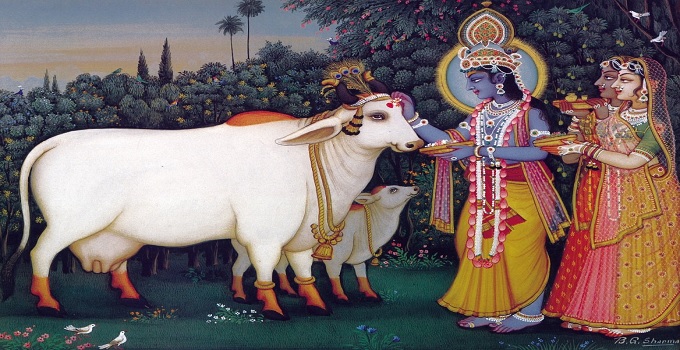
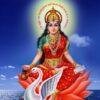
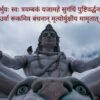



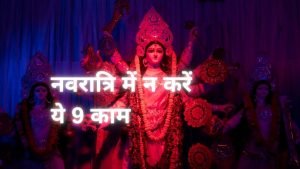





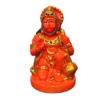
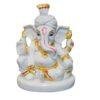

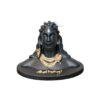


Add comment